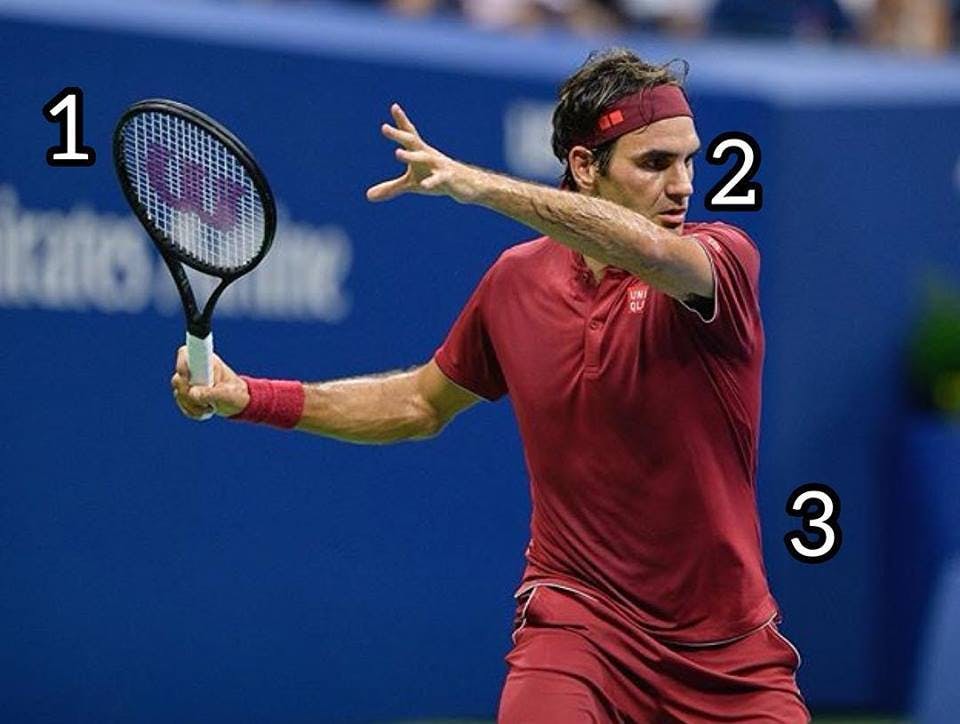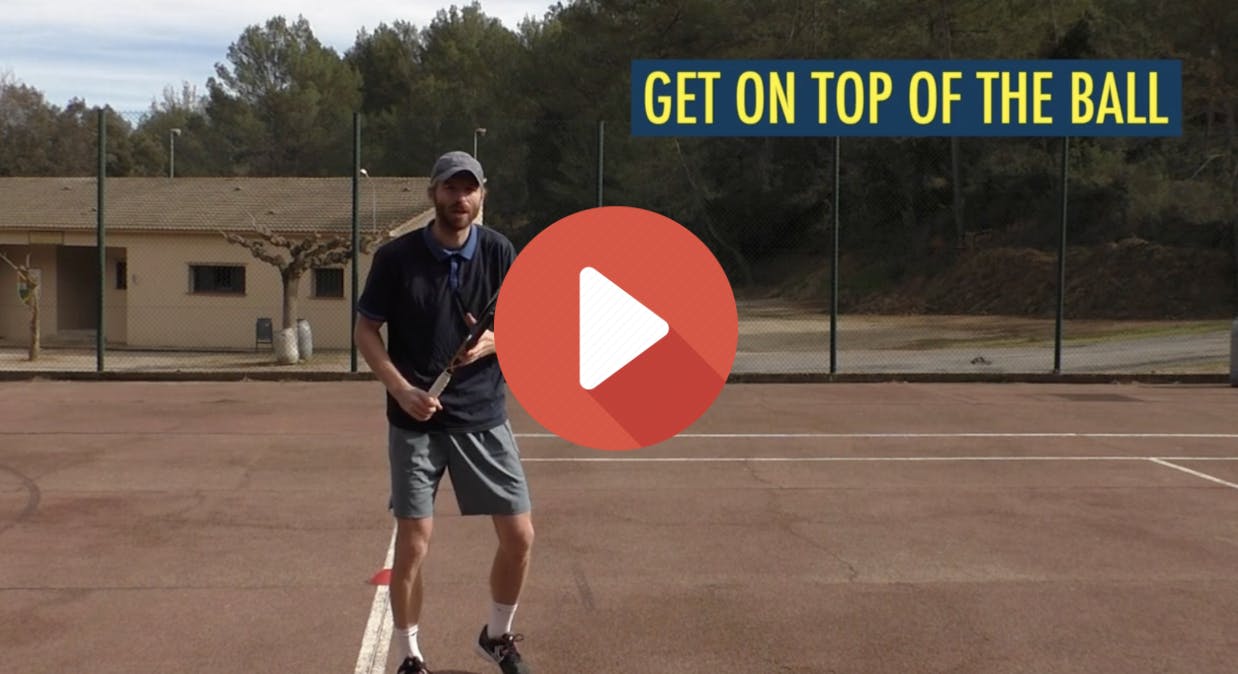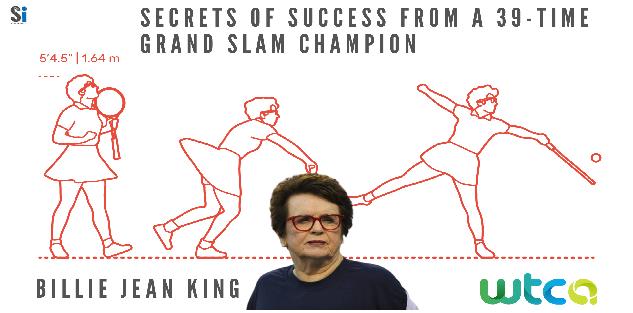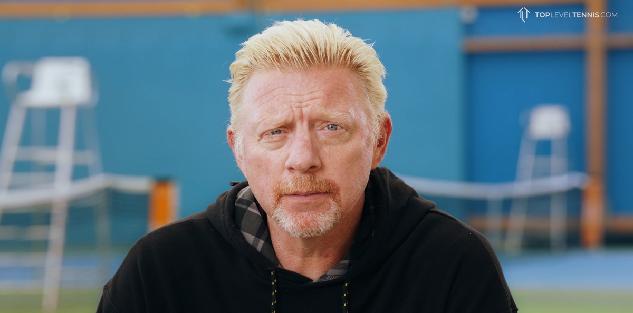Featured courses
- Four Tips to Turn Your Tennis Forehand Into a Weapon by Grant Young
- Tennis Legend Billie Jean King’s 4 Responsibilities as a Player by Grant Young
- Two Top Priorities For Success in Doubles Tennis by Grant Young
- Three of Tennis Whiz Lisa Dodson’s Tips to Improve Serves by Grant Young
- Three Elite Tennis Ball Machine Drills by Grant Young
- Three Keys For Correcting Tennis Serving Mechanics by Grant Young
- Five Tactical Tips to Win More Tennis Matches by Grant Young
- 4 Lessons Patrick Mouratoglou Learned From Coaching Serena Williams by Grant Young
- Four Effective Backhand Tennis Drills by Grant Young
- Two of Legendary Tennis Coach Paul Annacone’s Crucial Player Development Tips by Grant Young
- A Step-By-Step Guide To Mastering The Serve by Krsto Arsenijevic
- How to Dominate the Clay Court in Tennis by Krsto Arsenijevic
- 10 Essential Tennis Drills Every Coach Should Know by Brandon Ogle
- 8 Pre-Game Exercises to Prime Your Tennis Team for Competition by Neil Brown
- 7 Proven Tips To Develop Your Net Game in Tennis by Krsto Arsenijevic
- 10 Essential Tennis Drills Every Coach Should Know by Krsto Arsenijevic
- Developing Players - Two-handed backhand by Ramon Osa
- 6 Simple Warm-up Exercises For Tennis Players by Krsto Arsenijevic
- How to Beat a Serve-and-Volley Player by Krsto Arsenijevic
- How To Build Your Kinetic Chain Like Djokovic by Aiden Lefebvre
- How to neutralize a lefty in Tennis by Aiden Lefebvre
- 5 Tips To Improve Your Tennis Game Today by Krsto Arsenijevic
- Everything You Need to Know Before Buying New Tennis Shoes by Brandon Ogle
- Amp up your tennis practice with situational play by Neil Brown
- Tennis Equipment List by Brandon Ogle
- How to Master The One-handed Backhand in Tennis by Krsto Arsenijevic
- Modern High School Tennis Coaching Obstacles by Neil Brown
- Increase Your Tennis Fitness Level With 3 Easy Drills by Krsto Arsenijevic
- How to Successfully Hit a Two-Handed Backhand by Brandon Ogle
- How to Become a Grass Court Specialist in Tennis by Brandon Ogle
- How to Dominate the Hard-Court like Serena Williams by Brandon Ogle
- Hit a Drop Shot to Keep Your Opponent Off-Balance by Brandon Ogle
- New Tennis Injury Findings Linked to Neutral & Closed Stances by Oscar Wegner
- CHATTING WITH TENNIS PRO BRUCE CONNORS by Brandon
- How to Become a Mentally Strong Tennis Player by Brandon Ogle
- How to Win the Game of Angles by Hitting Cross-Court Shots by Eric Mahnke

Four Tips to Turn Your Tennis Forehand Into a Weapon
- By Grant Young
Every player acknowledges the tennis forehand as a fundamental shot, yet surprisingly few transform it into a genuine weapon. The secret? It doesn't require years of training—just a handful of focused adjustments can dramatically elevate your forehand from basic to devastating.
But before these game-changing tips, players must first understand the basics of a decent forehand. First, grip matters immensely. The slight rotation from an eastern to a semi-western grip allows for more topspin generation while maintaining control. This small adjustment creates heavier balls that push opponents back and open the court.
Footwork serves as the foundation. Positioning yourself with shoulders turned and weight loaded on your back foot creates potential energy. The simple act of stepping into your shot transfers this energy through the ball, instantly adding power without additional effort.
The follow-through often gets overlooked. Finishing high and across your body—what coaches call "closing the door"—ensures proper rotation and spin. This single adjustment can add depth and consistency overnight.
Contact point is critical. Meeting the ball slightly in front of your body and at the peak of its bounce maximizes control. This seemingly minor positioning change creates clean contact and prevents the common error of hitting behind yourself.
Finally, visualization transforms mechanics into muscle memory. Before each shot, picture the ball traveling deep and heavy into your target zone. This mental practice aligns your body mechanics with your intention.
The beauty of these adjustments lies in their simplicity. They don't require rebuilding your stroke—just refining existing mechanics. Within weeks of implementing these focused changes, your forehand can evolve from merely consistent to a genuine threat that opponents fear.
The forehand weapon you've always wanted isn't years away—it's waiting to be unleashed through deliberate attention to these fundamental elements. And while all of these tips will serve as a basis, the tips that USPTR Pro Performance Tennis Coach Jan Metelka details in his ‘Turn Your Forehand Into A Weapon: Effortless Tennis Forehand Blueprint’ clinic will teach you everything you need to know in order to turn your forehand into a weapon and start dominating in your tennis matches.
We have pulled four of Coach Metelka’s lessons and have included them below.
Stance & Balance

Coach Metelka explains that the player wants to keep their body weight forward while hitting the forehand.
And depending on whether you’re a left-handed or right-handed player, they will want to make sure their non-racket hand is dropping a bit lower than their racket hand when preparing to hit the forehand. This also requires the belly to go backward a bit while the hips tilt forward.
When it’s time to hit the ball, the back hip should be the first thing to release from its coil, which will spring the rest of the body into motion and deliver energy and power through the ball.
Coach Metelka also conveys that the big toe of the back leg should always be pointed straight at the fence opposite it, and not anywhere closer to the net. This will ensure that your hips don’t get blocked from a full rotation, which would limit power and output.
Dealing With Higher Bouncing Balls

The mechanics involved with hitting the forehand of a higher bouncing ball are significantly different because of how the center of gravity shifts. Coach Metelka addresses this by saying that a player must stay on top of the ball, to the point where they will be hitting the ball while off the ground.
Of course, this is going to mean that it’s more difficult to generate power with the forehand on a high ball. Coach Metelka solves this by advising that the player get into something of a squatted position while preparing to hit the ball, coiling their legs so that they can spring forward and upward when it’s time to actually hit the ball.
When thinking of doing this, start by feeling yourself bending your knees and then springing upwards like a body weight squat (while remaining well balanced).
Forehand Fitness Drills - Side Leg Squats
Speaking of squats, Coach Melelka also discusses some drills and exercises that are great for improving the forehand’s strength. One is what he calls a side leg squad, which will start with the player holding a medicine ball that’s approximately between 8 to 10 pounds, but this will depend on the player.
From there, the player will do a side squat to the left side while placing the medicine ball over their left thigh. And when that left leg comes up from this squat/lunge position, the medicine ball will create added weight and tension to work with.
The athlete can either do consecutive reps on one leg (ideally 8 to 10) or alternate legs, making for about 20 reps total for each set.
The player’s weight must remain in their thighs, hips, and rear rather than having too much pressure pile up on the knee.
Forehand Fitness Drills - Attacking Forehand Practice On The Tennis Wall

Another drill that Coach Metelka discusses involves finding a wall that you can hit tennis balls repeatedly at.
With each hit, you will want to alternate how hard you’re hitting the ball so that it comes to you at different speeds. With each hit, you’ll want to ensure that your footwork is correct so that each hit is indeed a forehand.
This is a great opportunity to practice all of the other mechanical tips you’ve learned to this point.



